Key Takeaways
-
Physical Identification: Wasps have slender, narrow-waisted bodies with vibrant yellow and black coloring, smooth exteriors, and elongated antennae.
-
Nesting Habits: Social wasps create papery nests in protected spots, while solitary wasps build nests from mud, soil, or plant material independently.
-
Ecological Importance: Wasps help control pest insect populations and contribute to pollination, supporting ecosystem health.
-
Risks to Humans: Wasps can become aggressive when disturbed; their stings may trigger allergic reactions in some individuals.
-
Prevention & Management: Inspect homes regularly, seal off nesting entry points, and seek professional pest control for safe and effective wasp removal.
 Wasps are fascinating insects that play a critical role in our ecosystem, but they can also be a nuisance when they invade your home or garden. Understanding their appearance is key to recognizing and dealing with them effectively.
This guide provides detailed information on what a wasp looks like, including the appearance of a queen wasp, and offers some interesting facts about these insects.
Not sure if the insect you’re seeing is a wasp? Schedule a Free Pest Inspection Today, and let our experts help you identify and manage any unwanted guests quickly and safely.
Wasps are fascinating insects that play a critical role in our ecosystem, but they can also be a nuisance when they invade your home or garden. Understanding their appearance is key to recognizing and dealing with them effectively.
This guide provides detailed information on what a wasp looks like, including the appearance of a queen wasp, and offers some interesting facts about these insects.
Not sure if the insect you’re seeing is a wasp? Schedule a Free Pest Inspection Today, and let our experts help you identify and manage any unwanted guests quickly and safely.
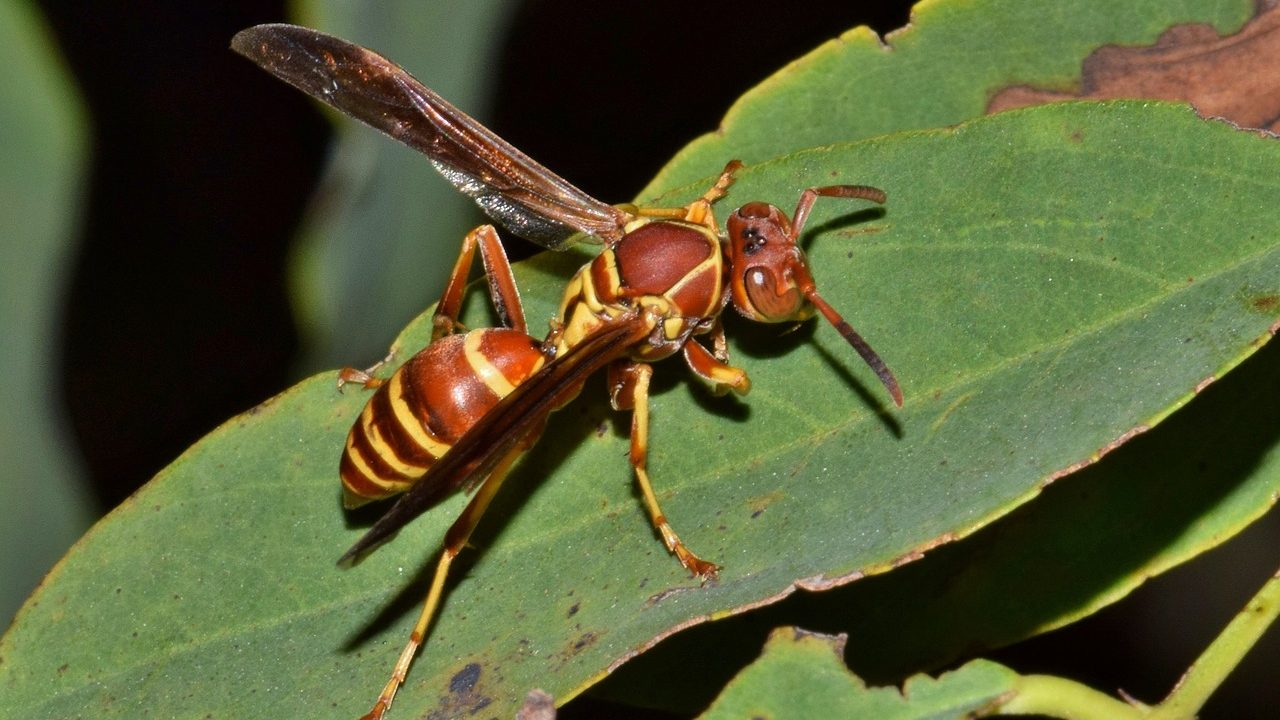

Not getting a solution?
Get your free pest control estimate today!Physical Appearance of Wasps
Body Structure and Shape Wasps have slender, elongated bodies with a narrow waist, known as a petiole, connecting the thorax and abdomen. This distinct narrow waist differentiates wasps from bees, giving them greater flexibility and agility during flight. Size and Color Variations Wasps vary significantly in size, typically ranging from half an inch to two inches in length. They usually feature striking colors, including yellow, black, orange, red, and even metallic shades, which serve as warnings to potential predators. Distinctive Markings and Features Wasps possess smooth, shiny bodies with fewer hairs compared to bees. Their bright, contrasting patterns—often yellow and black stripes—act as visual deterrents to predators. They also have powerful mandibles for chewing and elongated antennae that aid in navigation and communication.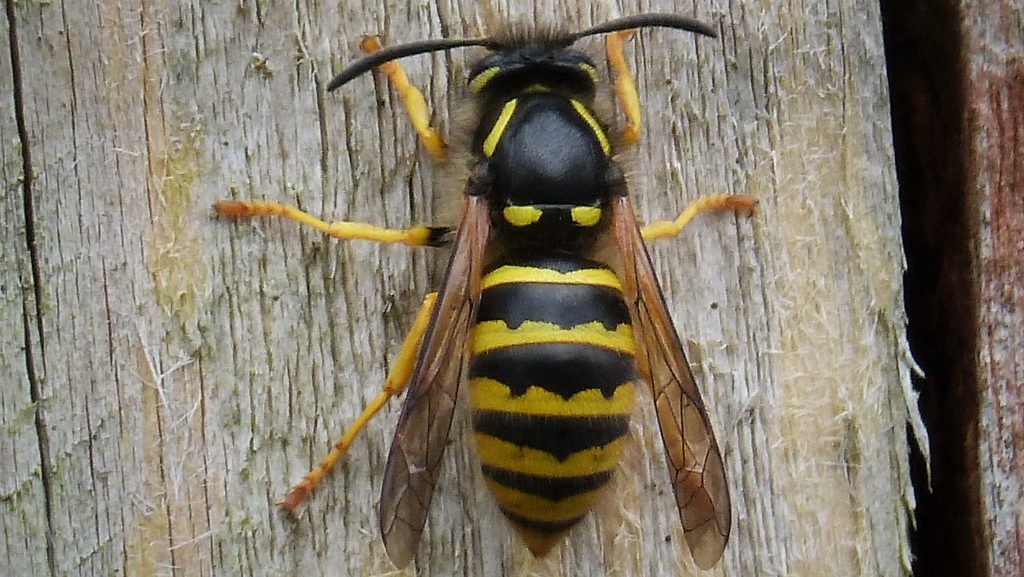
What Does a Queen Wasp Look Like?
A queen wasp can be distinguished from worker wasps by her size and certain physical features. Queen wasps are typically larger than the workers, sometimes by a significant margin. They have a more robust and elongated abdomen, which is necessary for egg production.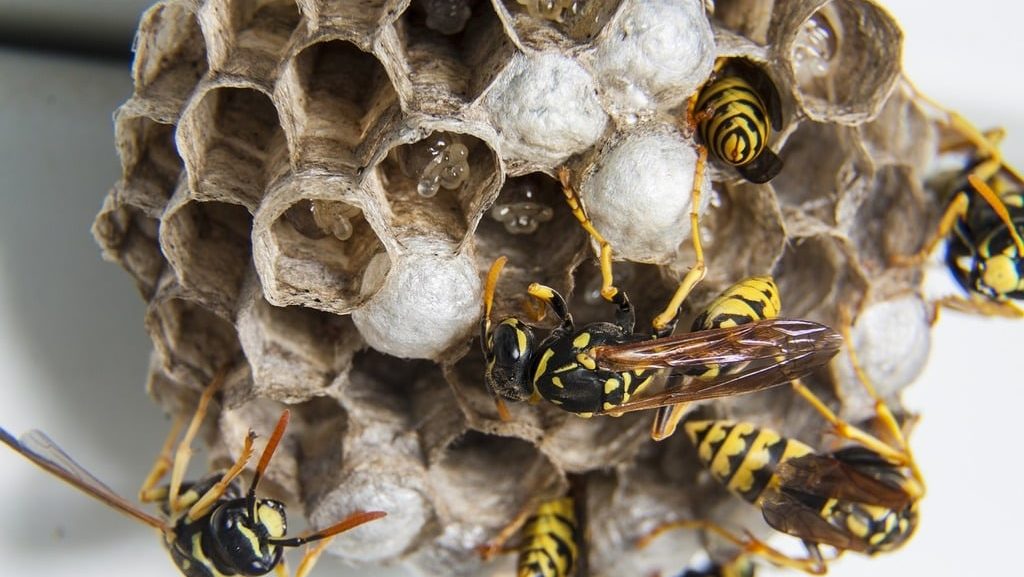
What Does a Wasp Egg Look Like?
Wasp eggs are small, oval-shaped, and translucent, making them hard to spot with the naked eye. Typically laid by the queen, these eggs are deposited in carefully prepared cells within the nest. The eggs are white or off-white and measure only a few millimeters long. Their soft, jelly-like appearance makes them highly vulnerable, protecting them within the nest structure.Types of Wasps
-
Social Wasps: These wasps live in colonies, building nests from paper-like material made from chewed wood fibers and saliva. Yellow jackets and paper wasps are common examples.
-
Solitary Wasps: These wasps, such as mud daubers and potter wasps, do not live in colonies. Instead, each female builds her own nest, often using mud or plant materials. Unlike social wasps, solitary wasps live independently, constructing individual nests. They typically have slender bodies and vary in color, from metallic blue to black and yellow.
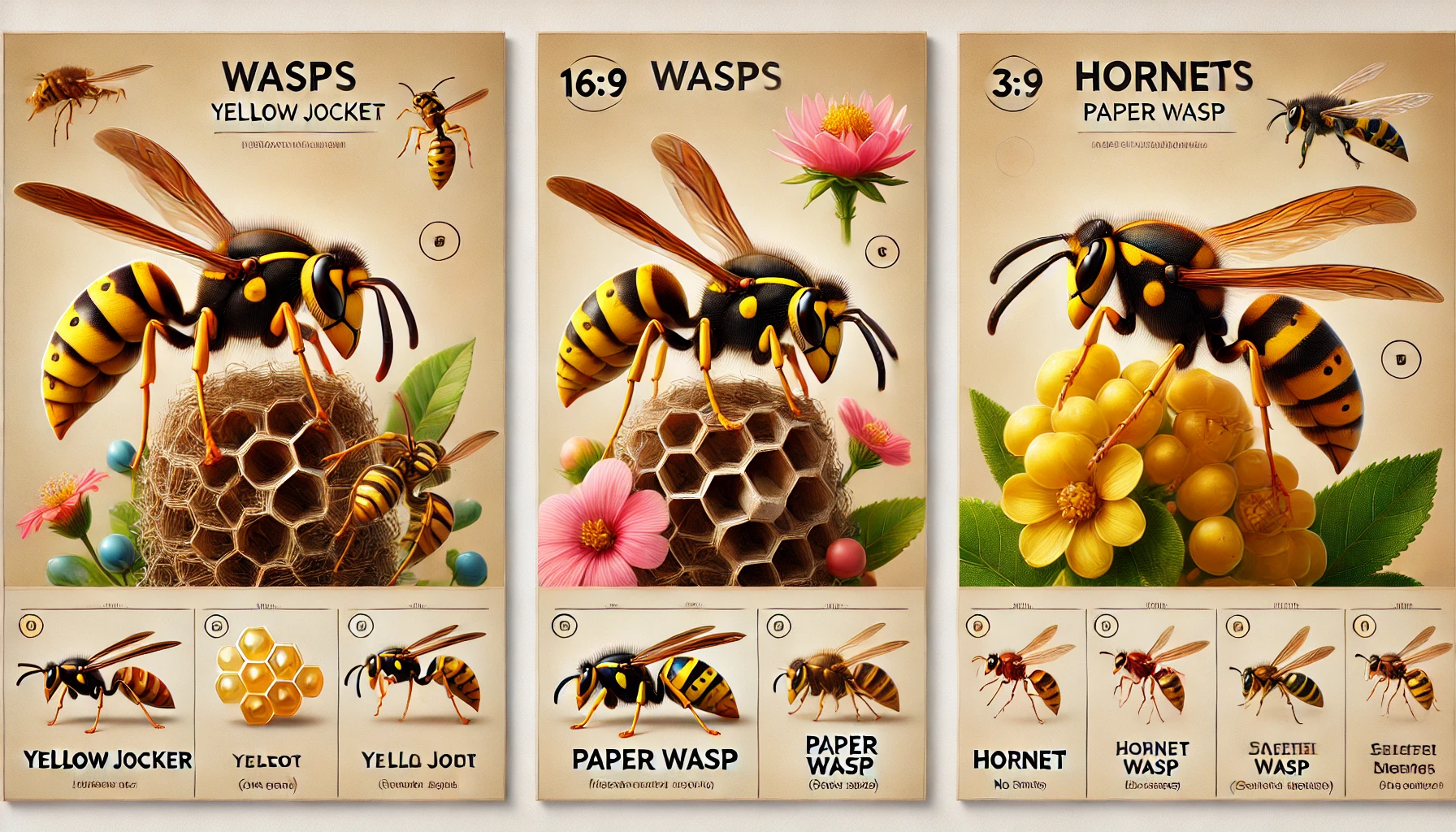
Different Types of Common Wasps
Paper Wasps: Features and Identification Paper wasps are identified by their slender bodies and long legs that dangle while flying. They construct open-comb nests resembling inverted umbrellas, typically found under eaves, porch ceilings, and tree branches. Yellow Jackets: Appearance and Traits Yellow jackets are robust, stocky wasps with distinctive yellow and black bands. Known for their aggressive behavior, they build large, enclosed paper nests underground, in wall cavities, or in hidden locations like attics and sheds. Hornets: How They Differ from Other Wasps Hornets are the largest type of social wasp, characterized by their larger size and predominantly black-and-white or brown-and-orange color patterns. They build sizable paper-like nests in trees, shrubs, or sometimes on structures.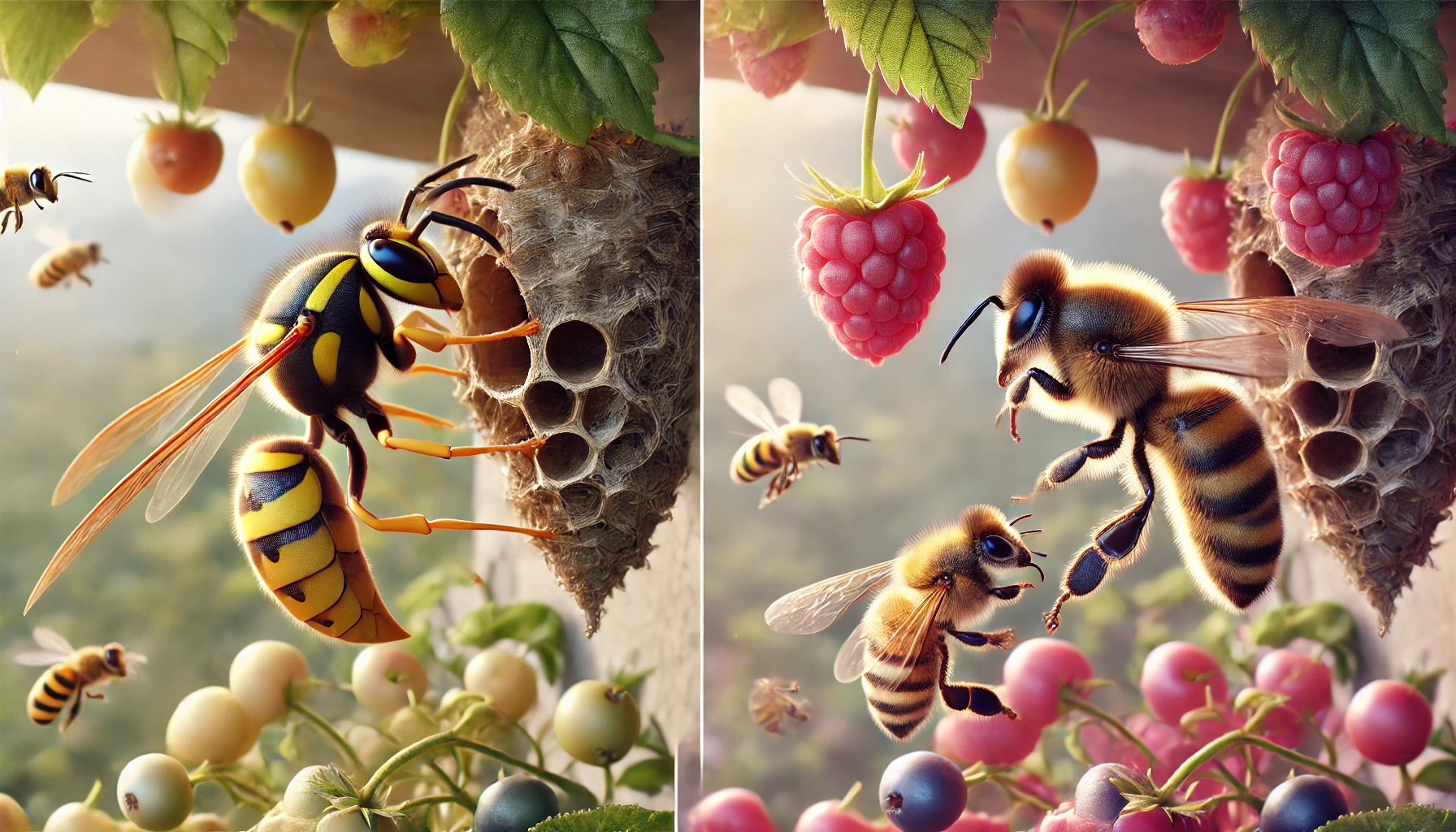
Wasp vs. Bee: How to Tell Them Apart
Key Physical Differences Wasps have a narrow waist, smooth bodies, and vibrant color patterns. Bees have robust, hairy bodies adapted for pollen collection and muted yellow to brownish tones. Behavioral Differences Wasps are predators or scavengers feeding on insects and sweets, whereas bees primarily feed on pollen and nectar. Bees are generally less aggressive unless provoked, while wasps can be more territorial and aggressive, especially near their nests.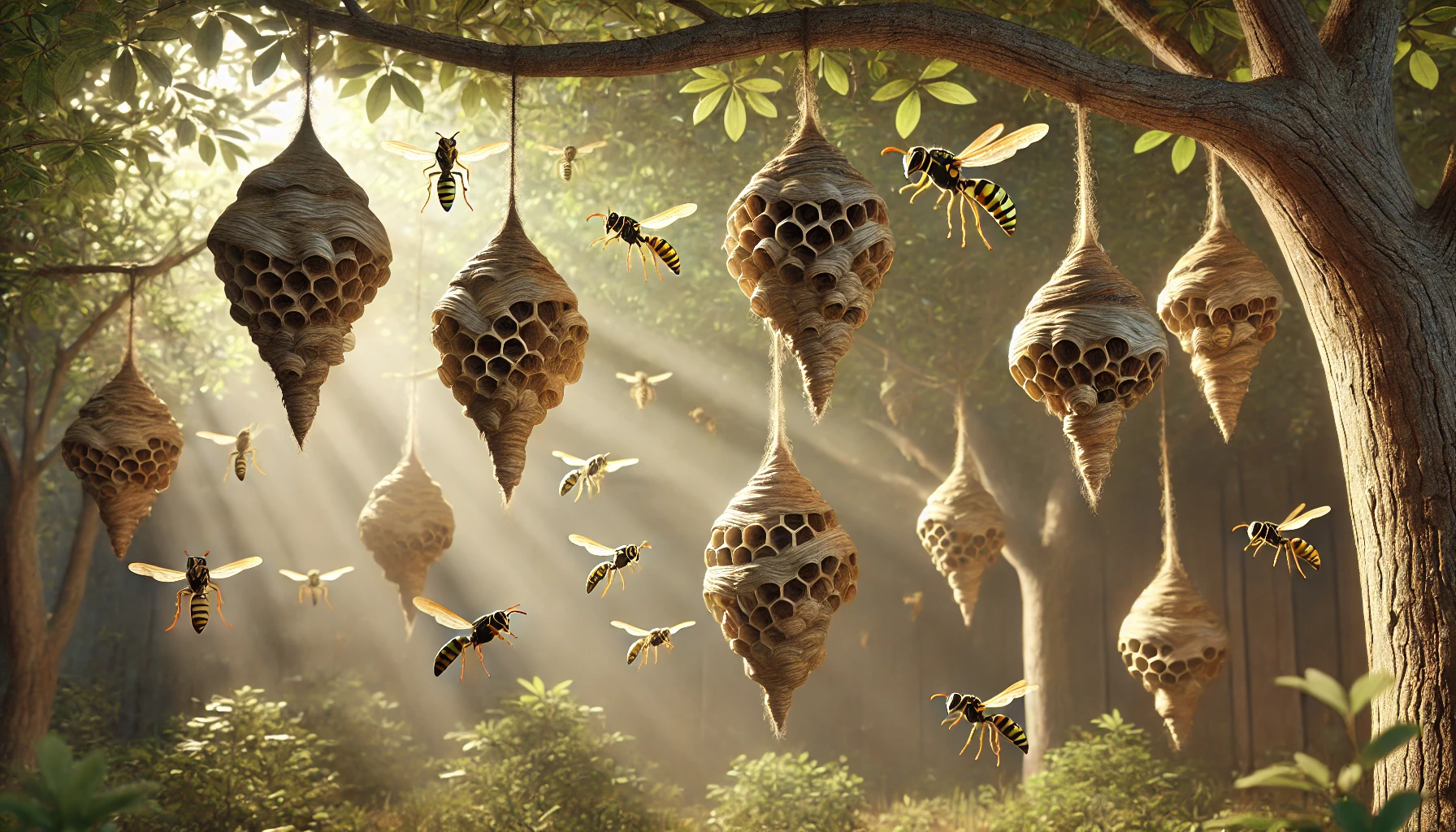
Typical Wasp Habitats and Nesting Habits
Where Wasps Build Nests Wasps commonly build nests in sheltered spots, such as beneath eaves, in attics, inside wall cavities, or underground. They prefer secluded, protected areas that offer easy access to food sources. Common Places to Find Wasps Around Your Home You may find wasps nesting in roof gutters, behind shutters, in garages, garden sheds, tree hollows, bushes, or beneath decking. Regular inspections can help detect nests early and avoid larger infestations.Wasp Behavior and Activity Patterns
Seasonal Activity and Lifecycle Wasps are most active from spring through late autumn. Queens establish new colonies each spring, and populations peak in late summer and early fall, after which the colonies decline with the onset of colder weather. Aggressiveness and When Wasps Are Most Dangerous Wasps become more aggressive when their nests are disturbed or during the late summer and fall when food sources are scarce. They are particularly protective of their nests and can sting repeatedly if threatened. What Attracts Wasps? Wasps are attracted to sweet foods, sugary beverages, ripe fruits, garbage, and insect prey. Ensuring food and drinks are covered and waste is sealed can significantly reduce wasp attraction.
Importance and Ecological Role of Wasps
Beneficial Aspects of Wasps Wasps play a critical ecological role by pollinating various plants, though less efficiently than bees. They also help control pest populations by preying on numerous garden pests and harmful insects. Role in Pest Control and the Environment By feeding on caterpillars, aphids, and other agricultural pests, wasps naturally maintain a balance within ecosystems. Their predatory behavior reduces the need for chemical pest control methods, benefiting gardens and crops.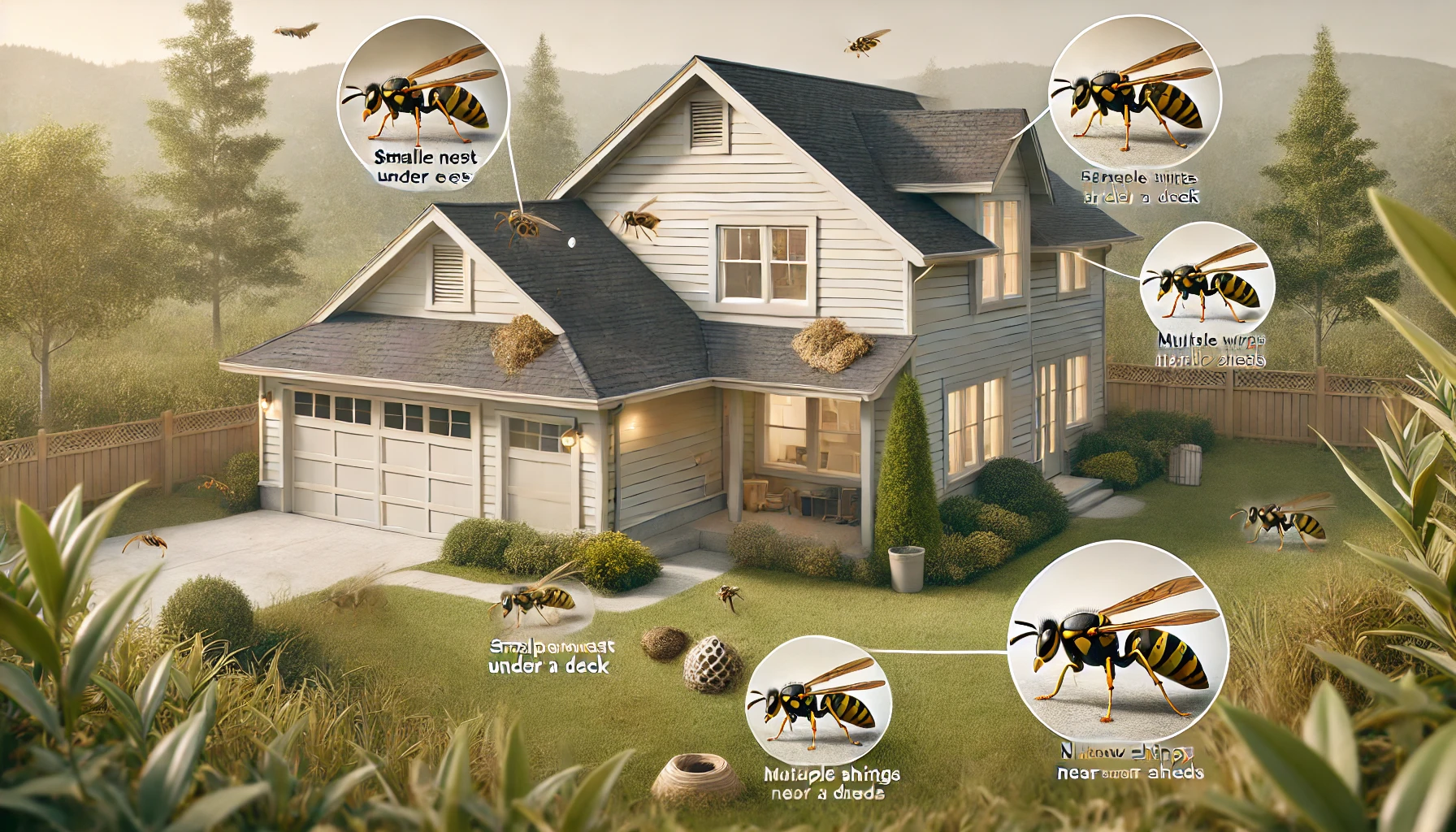
Signs of a Wasp Infestation
Visual Signs of Nesting and Activity Common signs include visible nests under eaves, decks, or trees; increased wasp activity around specific areas; and wasps frequently entering or leaving wall cavities or underground burrows. Indications of Increased Wasp Presence An unusual number of wasps gathering around food or water sources, frequent sightings indoors, and heightened aggressiveness in the vicinity can indicate a growing wasp population nearby.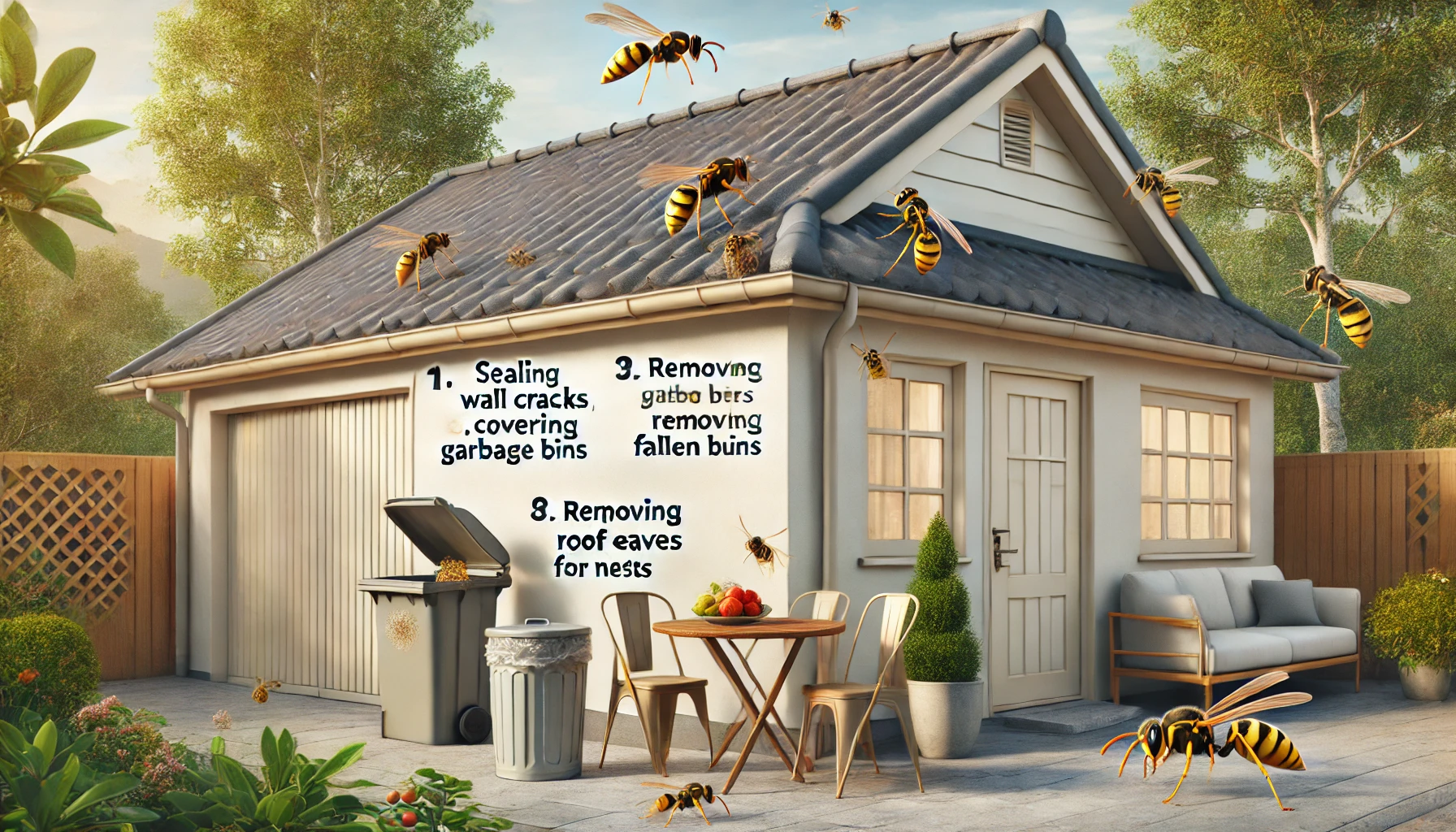
Prevention Tips: Keeping Wasps Away
Home Maintenance Practices Regularly inspect and seal potential nesting sites like cracks, holes, and gaps in structures. Maintain tidy outdoor spaces by keeping trash sealed, clearing fallen fruit, and ensuring water sources are not easily accessible. Safe and Effective Repellent Methods Planting natural wasp repellents such as mint, eucalyptus, and citronella can help deter wasps. Additionally, commercial repellents and traps designed specifically for wasps can be effective when used properly.Myths and Facts About Wasps
| Myth | Fact |
|---|---|
| All wasps are aggressive. | Not all wasps are aggressive. Some species are quite docile unless provoked. |
| Wasps are useless pests. | Wasps play a crucial role in the ecosystem by controlling pest populations and aiding in pollination. |
| Wasps cannot sting more than once. | Wasps can sting multiple times because their stingers do not have barbs. |
| All wasps live in large colonies. | Many wasps are solitary and do not live in colonies. |
| All wasps die after stinging. | Only bees die after stinging. Wasps can sting multiple times without dying. |





